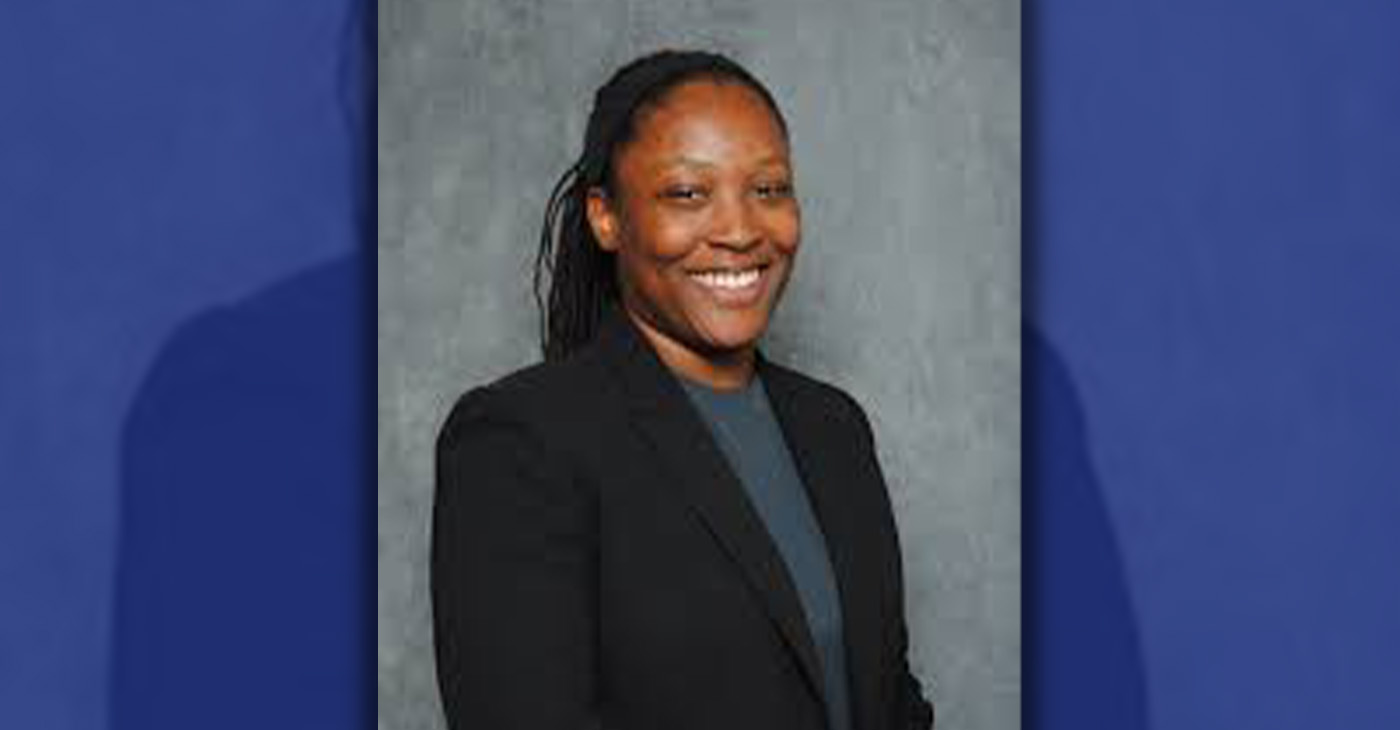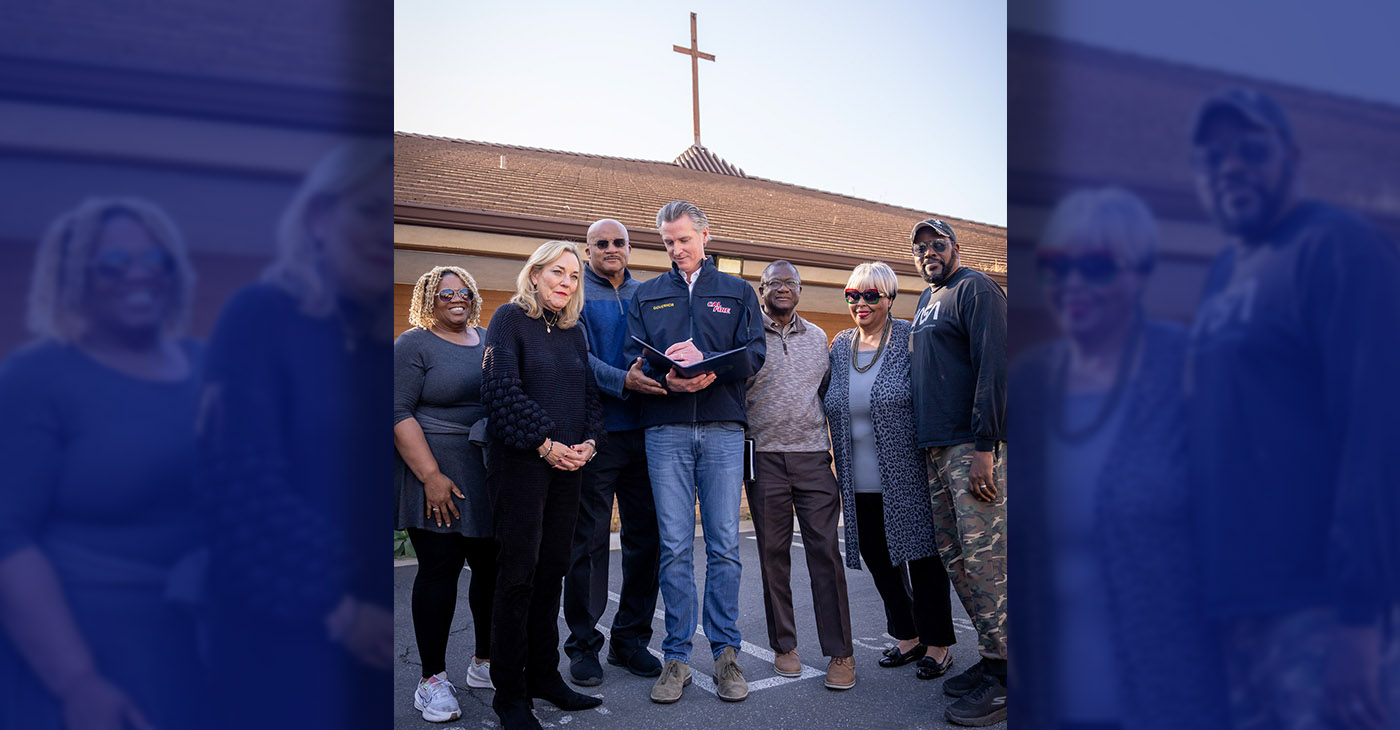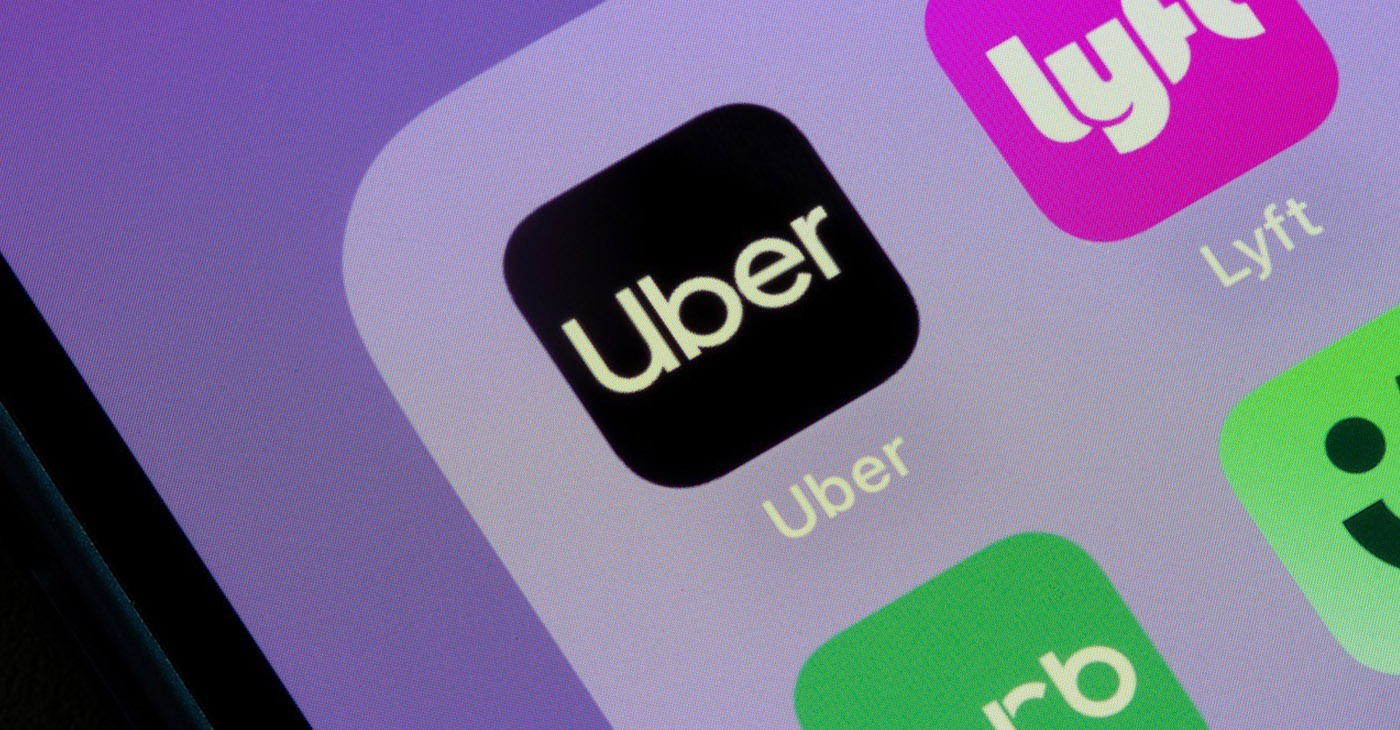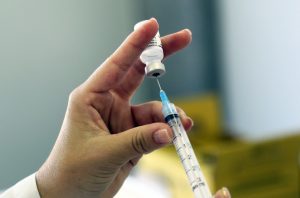Activism
Essay: Let’s Take an Honest Look at Distrust, Disparities and Discrimination in Medical Care
In medicine, we celebrate J. Marion Sims as the father of obstetrics, but until recently, we rarely mentioned that most of his medical breakthroughs were achieved through the suffering of Black women who were not adequately anesthetized as he experimented on some of the most delicate parts of their bodies. Books such as “Medical Apartheid” and “The Immortal Life of Henrietta Lacks” document the long history of Black bodies being used for scientific experimentation without any compensation or acknowledgement.

By Dr. Imani McElroy,
Special to California Black Media
As I became part of the small community of Black female surgeons, who represent less than 1% of all physicians, I embraced the responsibility with an understanding that part of my career would be dedicated to being a voice for marginalized and disenfranchised people.
Growing up in the San Francisco Bay Area, I observed the vast economic divide that contributes to health care disparities. Unstable employment and housing, food deserts, underfunded schools, and escalating living expenses all play a significant role in poor health for Black patients.
They also are a direct reflection of centuries of systemic discrimination and racism that has crippled Black Americans dating back to the era of slavery.
The same issues have followed me personally. I live with asthma, which has quietly impacted my breathing since childhood. I have been fortunate to avoid long-term hospitalization, but I have had numerous visits to urgent care and emergency departments.
I discussed my symptoms with my primary care physicians over the years, but it wasn’t until my third year living in Boston that I found a physician who attended to my symptoms and made the necessary adjustments that finally controlled my asthma. My asthma had progressed steadily for 15 years and despite being in the medical field and being able to describe the decline, my symptoms were ignored.
This is a story that is too common among Black Americans. Even fame could not protect Serena Williams when she had to demand appropriate testing and treatment for blood clots in her lungs following the birth of her first child.
I understood that my role as a health care provider extended well beyond the walls of the operating room and the hospital.
The plight of Black Americans within health care and the discrimination we face is well documented in both medical and lay literature.
In medicine, we celebrate J. Marion Sims as the father of obstetrics, but until recently, we rarely mentioned that most of his medical breakthroughs were achieved through the suffering of Black women who were not adequately anesthetized as he experimented on some of the most delicate parts of their bodies. Books such as “Medical Apartheid” and “The Immortal Life of Henrietta Lacks” document the long history of Black bodies being used for scientific experimentation without any compensation or acknowledgment.
If we are going to have an honest discussion about the root cause of medical mistrust within the Black community, the conversation cannot simply begin and end with the United States Public Health Service (USPHS) Untreated Syphilis Study at Tuskegee.
It’s essential to recognize that the generational trauma endured by the Black community contributes significantly to its skepticism towards medical institutions.
Healthcare advocacy is multifaceted. From physician-led initiatives addressing policy and resource allocation, to research that intentionally and thoughtfully addresses disparities in access and outcomes, to development of integrated multidisciplinary treatment teams for personalized care plans, there is quite possibly no more important step than educating the lay person.
Gone are the days of blind trust in a physician simply because of their title.
Furthermore, being able to empower patients to advocate for their health care needs will also allow physicians to understand how medical conditions impact their patients’ quality of life and everyday activities. Shared decision-making rests on a patient’s ability to trust the providers caring for them. The medical community owes it to Black Americans to afford them this trust.
As an advocate, I aim to bridge the gap between medical literature and lay literature. Making sure that our community has updated and accessible information that can impact their understanding of their medical conditions and improve the quality of care they receive.
As a Black woman in America, I face my own challenges, including navigating the health care system, and finding providers who look like me, understand my unique needs, and are willing to engage with me despite my medical background.
As my family members grow older and begin to interact more frequently with medical providers, I find myself in the frustrating position of having to help them advocate for themselves in a system that does not always listen.
My white coat does not shield me from the realities of being Black in America and thus I feel it is my duty to become part of the solution in addressing disparities in healthcare.
While much of the work to fix this problem falls in the hands of physicians and providers, active participation is required from both sides.
Increased representation in clinical trials will improve our understanding of risk factors and treatment responses. Attending health fairs and community outreach events will help increase medical literacy and understanding. Being persistent and truthful about symptom progression or treatment side effects is equally as important to help inform decision making.
Most of our medical knowledge is hidden behind paywalls buried in medical jargon. My goal is to help make what is happening in the medical community more accessible to our community.
About the Author
A native of the Bay Area, Dr. Imani E. McElroy is a clinical fellow of Vascular Surgery at USC Keck School of Medicine. She completed general surgery training at the Massachusetts General Hospital in Boston, MA. She has a master of Public Health from the Harvard T.H. Chan School of Public Health and received a Doctor of Medicine from the Charles R. Drew University/UCLA David Geffen School of Medicine. She earned a bachelor’s degree in Biological Sciences from the University of California Irvine.
This article is supported by the California Black Health Journalism Project, a program created by California Black Media, that addresses the top health challenges African Americans in California face. It relies on the input of community and practitioners; an awareness of historical factors, social contexts and root causes; and a strong focus on solutions as determined by policymakers, advocates and patients.
Activism
Gov. Newsom Approves $170 Million to Fast Track Wildfire Resilience
AB 100 approves major investments in regional conservancies across the state, including over $30 million each for the Sierra Nevada, Santa Monica Mountains, State Coastal, and San Gabriel/Lower LA Rivers and Mountains conservancies. An additional $10 million will support wildfire response and resilience efforts.

By Bo Tefu
California Black Media
With wildfire season approaching, last week Gov. Gavin Newsom signed Assembly Bill (AB) 100, unlocking $170 million to fast-track wildfire prevention and forest management projects — many of which directly protect communities of color, who are often hardest hit by climate-driven disasters.
“With this latest round of funding, we’re continuing to increase the speed and size of forest and vegetation management essential to protecting communities,” said Newsom when he announced the funding on April 14.
“We are leaving no stone unturned — including cutting red tape — in our mission to ensure our neighborhoods are protected from destructive wildfires,” he said.
AB 100 approves major investments in regional conservancies across the state, including over $30 million each for the Sierra Nevada, Santa Monica Mountains, State Coastal, and San Gabriel/Lower LA Rivers and Mountains conservancies. An additional $10 million will support wildfire response and resilience efforts.
Newsom also signed an executive order suspending certain regulations to allow urgent work to move forward faster.
This funding builds on California’s broader Wildfire and Forest Resilience Action Plan, a $2.7 billion effort to reduce fuel loads, increase prescribed burning, and harden communities. The state has also launched new dashboards to keep the public informed and hold agencies accountable.
California has also committed to continue investing $200 million annually through 2028 to expand this effort, ensuring long-term resilience, particularly in vulnerable communities.
Activism
California Rideshare Drivers and Supporters Step Up Push to Unionize
Today in California, over 600,000 rideshare drivers want the ability to form or join unions for the sole purpose of collective bargaining or other mutual aid and protection. It’s a right, and recently at the State Capitol, a large number of people, including some rideshare drivers and others working in the gig economy, reaffirmed that they want to exercise it.

By Antonio Ray Harvey
California Black Media
On July 5, 1935, President Franklin D. Roosevelt signed into federal law the National Labor Relations Act (NLRA). Also known as the “Wagner Act,” the law paved the way for employees to have “the right to self-organization, to form, join, or assist labor organizations,” and “to bargain collectively through representatives of their own choosing, according to the legislation’s language.
Today in California, over 600,000 rideshare drivers want the ability to form or join unions for the sole purpose of collective bargaining or other mutual aid and protection. It’s a right, and recently at the State Capitol, a large number of people, including some rideshare drivers and others working in the gig economy, reaffirmed that they want to exercise it.
On April 8, the rideshare drivers held a rally with lawmakers to garner support for Assembly Bill (AB) 1340, the “Transportation Network Company Drivers (TNC) Labor Relations Act.”
Authored by Assemblymembers Buffy Wicks (D-Oakland) and Marc Berman (D-Menlo Park), AB 1340 would allow drivers to create a union and negotiate contracts with industry leaders like Uber and Lyft.
“All work has dignity, and every worker deserves a voice — especially in these uncertain times,” Wicks said at the rally. “AB 1340 empowers drivers with the choice to join a union and negotiate for better wages, benefits, and protections. When workers stand together, they are one of the most powerful forces for justice in California.”
Wicks and Berman were joined by three members of the California Legislative Black Caucus (CLBC): Assemblymembers Tina McKinnor (D-Inglewood), Sade Elhawary (D-Los Angeles), and Isaac Bryan (D-Ladera Heights).
Yvonne Wheeler, president of the Los Angeles County Federation of Labor; April Verrett, President of Service Employees International Union (SEIU); Tia Orr, Executive Director of SEIU; and a host of others participated in the demonstration on the grounds of the state capitol.
“This is not a gig. This is your life. This is your job,” Bryan said at the rally. “When we organize and fight for our collective needs, it pulls from the people who have so much that they don’t know what to do with it and puts it in the hands of people who are struggling every single day.”
Existing law, the “Protect App-Based Drivers and Services Act,” created by Proposition (Prop) 22, a ballot initiative, categorizes app-based drivers for companies such as Uber and Lyft as independent contractors.
Prop 22 was approved by voters in the November 2020 statewide general election. Since then, Prop 22 has been in court facing challenges from groups trying to overturn it.
However, last July, Prop 22 was upheld by the California Supreme Court last July.
In a 2024, statement after the ruling, Lyft stated that 80% of the rideshare drivers they surveyed acknowledged that Prop 22 “was good for them” and “median hourly earnings of drivers on the Lyft platform in California were 22% higher in 2023 than in 2019.”
Wicks and Berman crafted AB 1340 to circumvent Prop 22.
“With AB 1340, we are putting power in the hands of hundreds of thousands of workers to raise the bar in their industry and create a model for an equitable and innovative partnership in the tech sector,” Berman said.
Activism
California Holds the Line on DEI as Trump Administration Threatens School Funding
The conflict began on Feb. 14, when Craig Trainor, acting assistant secretary for civil rights at the U.S. Department of Education (DOE), issued a “Dear Colleague” letter warning that DEI-related programs in public schools could violate federal civil rights law. The letter, which cited Title VI of the Civil Rights Act and the 2023 Supreme Court ruling in Students for Fair Admissions v. Harvard, which ended race-conscious admissions, ordered schools to eliminate race-based considerations in areas such as admissions, scholarships, hiring, discipline, and student programming.

By Joe W. Bowers Jr
California Black Media
California education leaders are pushing back against the Trump administration’s directive to dismantle diversity, equity, and inclusion (DEI) programs in its K-12 public schools — despite threats to take away billions in federal funding.
The conflict began on Feb. 14, when Craig Trainor, acting assistant secretary for civil rights at the U.S. Department of Education (DOE), issued a “Dear Colleague” letter warning that DEI-related programs in public schools could violate federal civil rights law. The letter, which cited Title VI of the Civil Rights Act and the 2023 Supreme Court ruling in Students for Fair Admissions v. Harvard, which ended race-conscious admissions, ordered schools to eliminate race-based considerations in areas such as admissions, scholarships, hiring, discipline, and student programming.
According to Trainor, “DEI programs discriminate against one group of Americans to favor another.”
On April 3, the DOE escalated the pressure, sending a follow-up letter to states demanding that every local educational agency (LEA) certify — within 10 business days — that they were not using federal funds to support “illegal DEI.” The certification requirement, tied to continued federal aid, raised the stakes for California, which receives more than $16 billion annually in federal education funding.
So far, California has refused to comply with the DOE order.
“There is nothing in state or federal law that outlaws the broad concepts of ‘diversity,’ ‘equity,’ or ‘inclusion,’” wrote David Schapira, California’s Chief Deputy Superintendent of Public Instruction, in an April 4 letter to superintendents and charter school administrators. Schapira noted that all of California’s more than 1,000 traditional public school districts submit Title VI compliance assurances annually and are subject to regular oversight by the state and the federal government.
In a formal response to the DOE on April 11, the California Department of Education, the State Board of Education, and State Superintendent of Public Instruction Tony Thurmond collectively rejected the certification demand, calling it vague, legally unsupported, and procedurally improper.
“California and its nearly 2,000 LEAs (including traditional public schools and charter schools) have already provided the requisite guarantee that its programs and services are, and will be, in compliance with Title VI and its implementing regulation,” the letter says.
Thurmond added in a statement, “Today, California affirmed existing and continued compliance with federal laws while we stay the course to move the needle for all students. As our responses to the United States Department of Education state and as the plain text of state and federal laws affirm, there is nothing unlawful about broad core values such as diversity, equity and inclusion. I am proud of our students, educators and school communities who continue to focus on teaching and learning, despite federal actions intended to distract and disrupt.”
California officials say that the federal government cannot change existing civil rights enforcement standards without going through formal rule-making procedures, which require public notice and comment.
Other states are taking a similar approach. In a letter to the DOE, Daniel Morton-Bentley, deputy commissioner and counsel for the New York State Education Department, wrote, “We understand that the current administration seeks to censor anything it deems ‘diversity, equity & inclusion.’ But there are no federal or State laws prohibiting the principles of DEI.”
-

 Activism4 weeks ago
Activism4 weeks agoOakland Post Endorses Barbara Lee
-

 Activism3 weeks ago
Activism3 weeks agoOakland Post: Week of April 2 – 8, 2025
-

 #NNPA BlackPress3 weeks ago
#NNPA BlackPress3 weeks agoTrump Profits, Black America Pays the Price
-

 Activism2 weeks ago
Activism2 weeks agoOakland Post: Week of April 9 – 15, 2025
-

 #NNPA BlackPress3 weeks ago
#NNPA BlackPress3 weeks agoHarriet Tubman Scrubbed; DEI Dismantled
-

 #NNPA BlackPress3 weeks ago
#NNPA BlackPress3 weeks agoTrump Targets a Slavery Removal from the National Museum of African-American History and Culture
-

 #NNPA BlackPress3 weeks ago
#NNPA BlackPress3 weeks agoLawmakers Greenlight Reparations Study for Descendants of Enslaved Marylanders
-

 #NNPA BlackPress3 weeks ago
#NNPA BlackPress3 weeks agoNew York Stands Firm Against Trump Administration’s Order to Abandon Diversity in Schools


























































